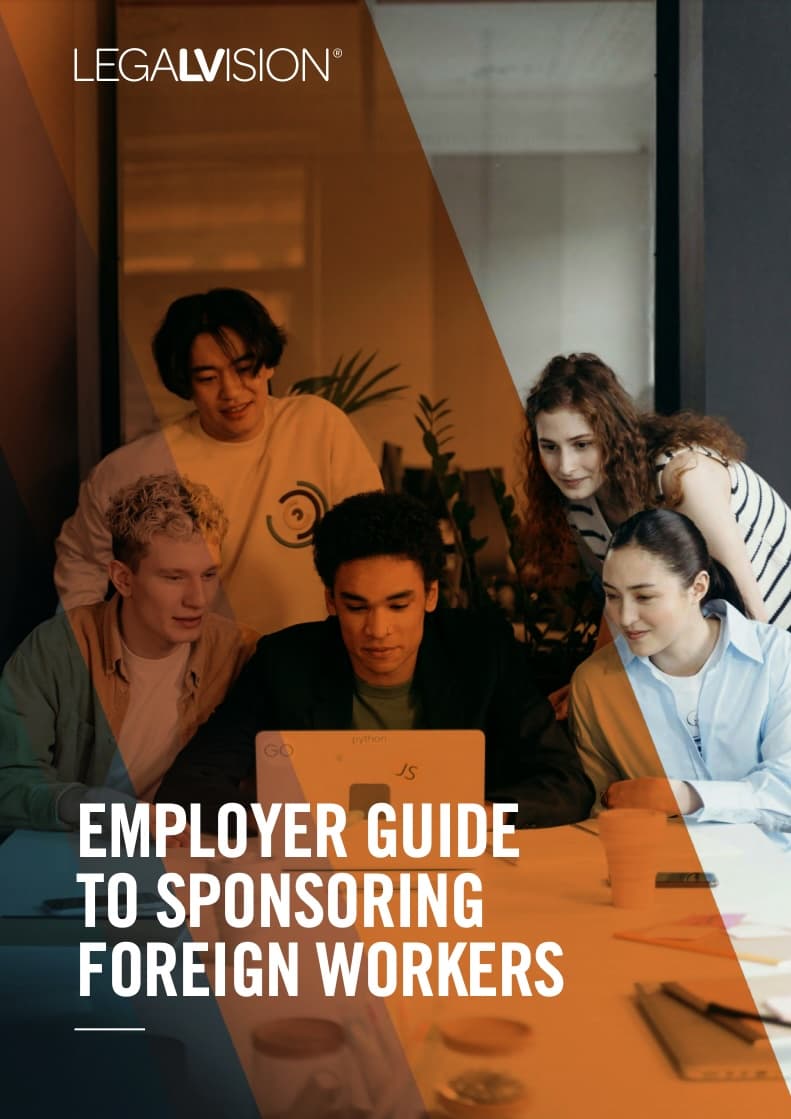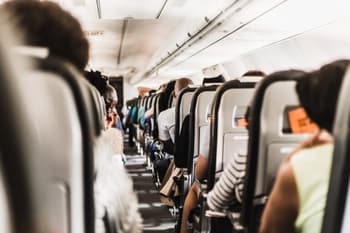Most employer-sponsored visas in Australia require the employer to nominate a position on the skilled occupation list. However, there are times when a labour agreement will be more appropriate for your business needs and objectives. An example of when you may need a labour agreement is under the Skilled Refugee Labour Agreement Pilot. This article will explain what a labour agreement is, the types and requirements, and the process for making a request.
What is a Labour Agreement?
A labour agreement is a special contractual arrangement that employers negotiate and enter into with the Department of Home Affairs (DOHA). This arrangement typically allows you to sponsor skilled overseas workers to work for a specified time and in an approved occupation through subclasses 482, 494 and 186. These flexible arrangements assist employers in addressing immediate skills needs whilst protecting opportunities for job-ready Australians.
Note that labour agreements are accessible in limited or exceptional circumstances where the minimum requirements are met. The Department of Home Affairs is under no obligation to enter into a labour agreement with an Australian business/employer.
What Kinds of Labour Agreements Are Available?
There are five types of labour agreements.
1. Company Specific Labour Agreements (CSLA)
A CSLA is made directly between the Australian government and your business.
You may consider requesting a CSLA where:
- the occupation you require is not on the skilled occupation list or involves a combination of duties, tasks and responsibilities from multiple ANZSCO occupations;
- a genuine skill or labour shortage exists for an occupation that an industry labour agreement does not already cover; and
- a designated area migration agreement or project agreement is not in place.
2. Industry Labour Agreements (ILA)
An ILA covers specific industries and provides fixed terms and conditions of the agreement (meaning they are non-negotiable). The DOHA may consider an ILA where several businesses in one industry have approached the DOHA for a labour agreement, and there is evidence of ongoing labour shortages and extensive consultation within that industry.
If your business falls within one of the eight ILA industries below, you may consider applying for an ILA:
- dairy;
- fishing;
- meat;
- minister of religion;
- on-hire;
- pork;
- restaurant (fine dining); and
- advertising.
To request an ILA, you must meet the requirements relevant to the specific industry, which you can locate on the Department’s website.

Sponsoring overseas workers as an Australian business is complicated. Let us simplify it for you with this free employer guide.
3. Designated Area Migration Agreements (DAMA)
A DAMA may be suitable if your business is located in a regional area and you need to fill a particular skill or labour need. This agreement will be between your business, the Australian government and the relevant regional, state or territory authority. There are currently 12 DAMA’s in place for certain regions.
If you are requesting a new DAMA Head Agreement, you must demonstrate the following in your request:
- a letter of endorsement from the relevant state/territory;
- endorsement from a Designated Area Representative (DAR) endorsed by the state/territory;
- an explanation of how the DAR proposes to support employers and facilitate the integration of overseas workers into their local communities;
- supporting documentation, including financials;
- a business case if any additional concessions are being requested; and
- evidence of consultation with relevant industry stakeholders, such as industry bodies or unions, and provide them with specific information about the agreement.
Suppose you request an individual business agreement under an existing DAMA to access the occupations and concessions under this. In that case, you must obtain endorsement by the relevant DAR for the DAMA.
4. Global Talent Scheme Agreements (GTES)
Under the GTES, you can sponsor overseas workers with cutting-edge skills for niche, highly skilled positions through the Temporary Skill Shortage visas. It aims to bring global, highly-skilled and specialised individuals to Australia. The GTES program has two streams:
- the established business stream – you must be an accredited sponsor. You will be allowed to sponsor 20 positions per year with a minimum salary threshold of $148,700; and
- the start-up stream for start-ups operating in a tech-based or STEM field – you must obtain endorsement by the Start-up Advisory Panel. You will be allowed to sponsor 5 positions per year with a minimum salary of $80,000.
Accordingly, approved businesses must meet specific requirements to be considered for a GTES agreement. For example, you must demonstrate that you cannot fill the positions by Australian workers or through existing skilled visa programs. Furthermore, you must demonstrate how this will provide opportunities for existing Australians.
5. Project Agreements (PA)
These agreements are for companies with construction or infrastructure projects that experience or foresee a genuine labour or skills shortage that will impact projects. Project companies with projects endorsed by the Department of Foreign Affairs and Trade under the China-Australia Investment Facilitation Arrangement can request a project agreement. Similar to a DAMA, a two-tier system is in place where the company will need to negotiate a head deed of agreement with the DOHA, and then negotiate an ILA with DOHA.
Continue reading this article below the formRequirements to Request a Labour Agreement
There are varying requirements depending on which labour agreement you are seeking. The requirements you will need to demonstrate reflect the nature of the labour agreement. Accordingly, it is important to address the correct criteria. The key requirements and principles that apply across all labour agreements include the following:
- the employer can demonstrate that there is a genuine labour market need for an overseas skilled worker to fill a position in Australia (e.g. the position cannot be filled by Australian workers, and you can demonstrate your recruitment efforts);
- there are no standard visa options available to source overseas workers;
- the proposed labour agreement aligns with Australia’s national interests and will not undermine the Australian workforce; and
- there is no adverse information about your business.
You should obtain legal advice on your eligibility and suitability for this program in advance to ensure your best prospects of success.
How Do I Request a Labour Agreement?
Once you are confident that you can demonstrate your eligibility, you can request a labour agreement by applying to the DOHA. Here, you must lodge an online labour agreement request form in ImmiAccount. As part of the application process, you must submit supporting documentation and evidence addressing the criteria for the type of labour agreement you request.
Following lodgement, the DOHA will typically assess your application within six months. If further information is required, you will generally need to respond to the Department’s request for more information within 7-14 days (depending on the nature of the information requested). DOHA may return incomplete requests or late responses without assessment.
If a labour agreement is approved, you will typically need to sign and return it within four weeks of execution. Your labour agreement will last for five years. During this time, you must monitor and comply with specific sponsorship obligations. Once approved, you can proceed to sponsor workers under this labour agreement, subject to workers meeting the eligibility criteria.
Key Takeaways
Labour agreements provide an alternative route to sponsoring skilled overseas workers when the standard employer-sponsored programs are unavailable or unsuitable.
There are currently five types of labour agreements available in Australia, namely:
- company-specific labour agreements;
- designated area migration agreements;
- industry labour agreements;
- project agreements; and
- global talent employer-sponsored agreements.
Each labour agreement has varying requirements. However, they share a goal of addressing labour market needs for overseas workers. You can request a labour agreement by submitting an online labour agreement request form in ImmiAccount, with supporting documentation to demonstrate that the requirements are met.
If you need help applying for a labour agreement to sponsor an overseas worker, our experienced immigration lawyers can assist as part of our LegalVision membership. For a low monthly fee, you will have unlimited access to lawyers to answer your questions and draft and review your documents. Call us today on 1300 544 755 or visit our membership page.
Frequently Asked Questions
A Labour Agreement is a special contractual agreement between an employer and the Department of Home Affairs (DOHA) to sponsor skilled overseas workers to fill a position where there is no standard visa pathway available. You will need to demonstrate that there is a genuine labour market need for overseas skilled workers to fill a position in Australia more immediately. An approved agreement can enable foreign workers to apply for employer-sponsored visas (specifically 482, 494 and 186), which, if granted, will apply the terms of the Labour Agreement.
You must lodge an online labour agreement request form in ImmiAccount. As part of the application process, you must submit supporting documentation and evidence addressing the criteria for the type of labour agreement you wish to request.
We appreciate your feedback – your submission has been successfully received.











